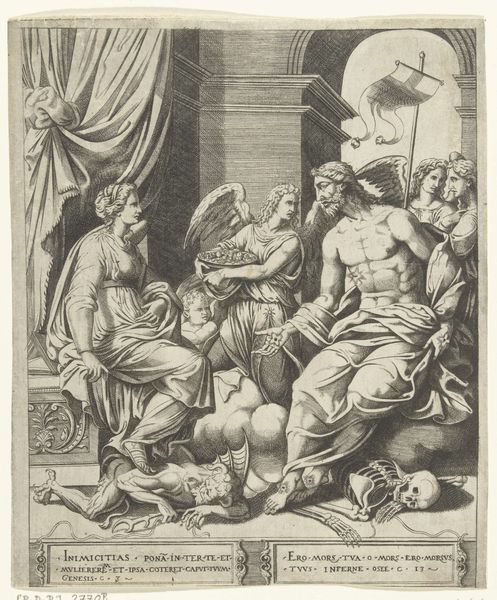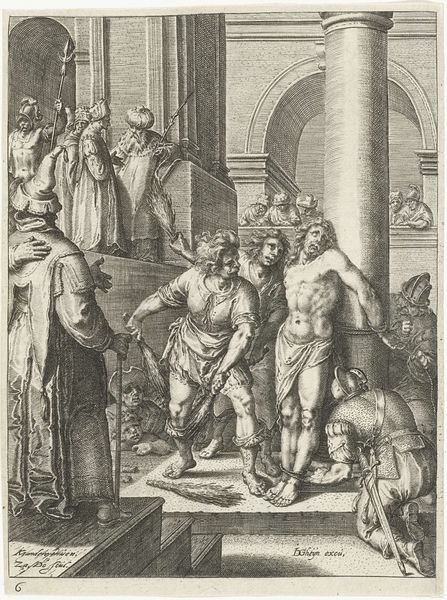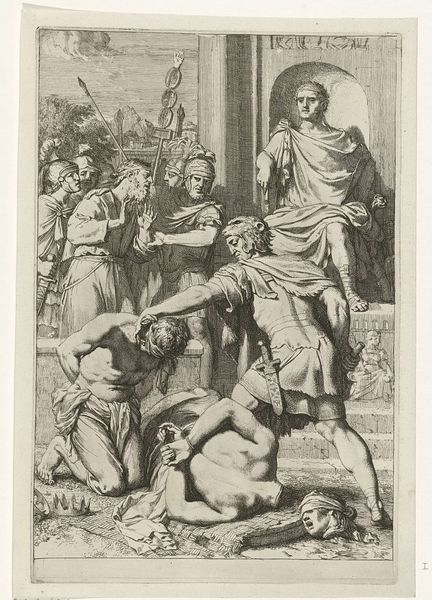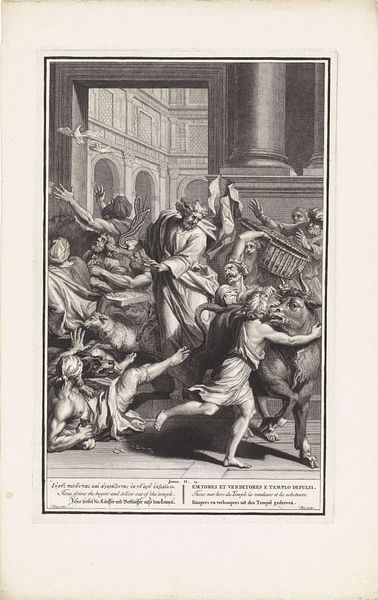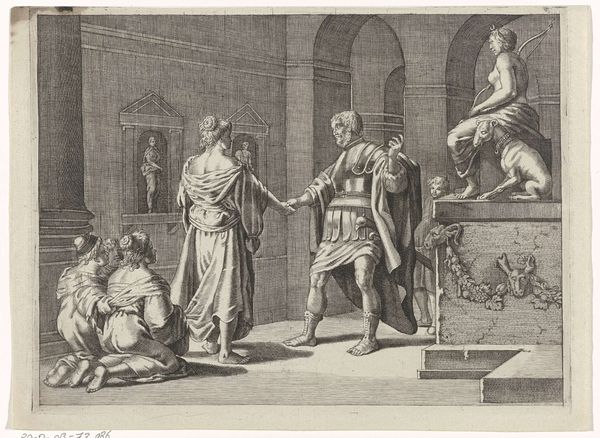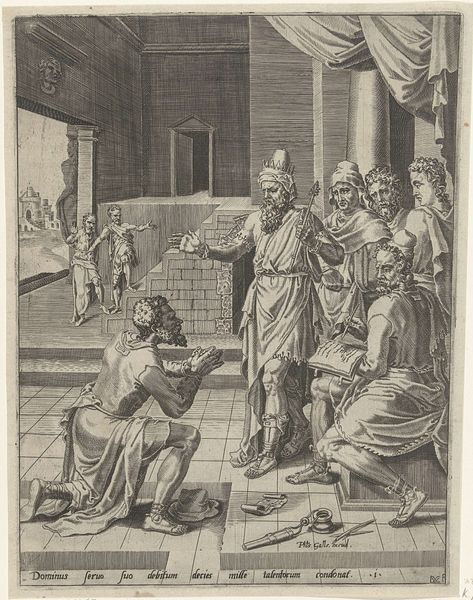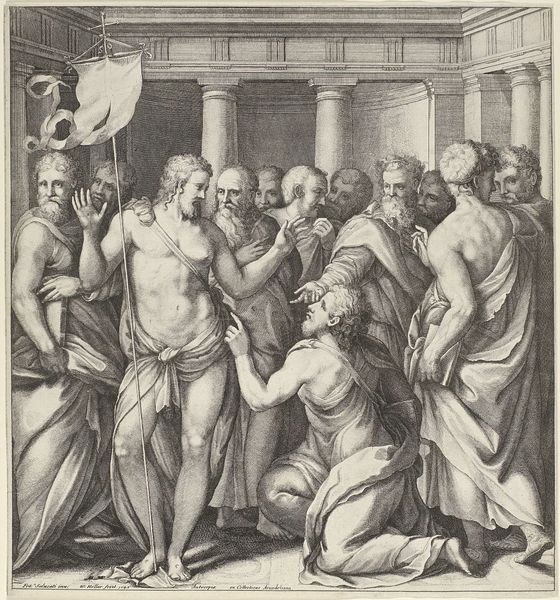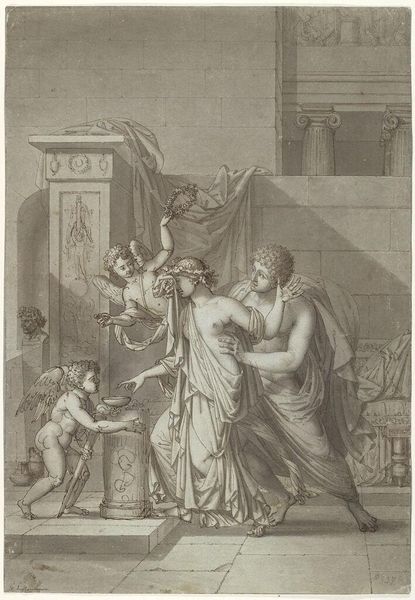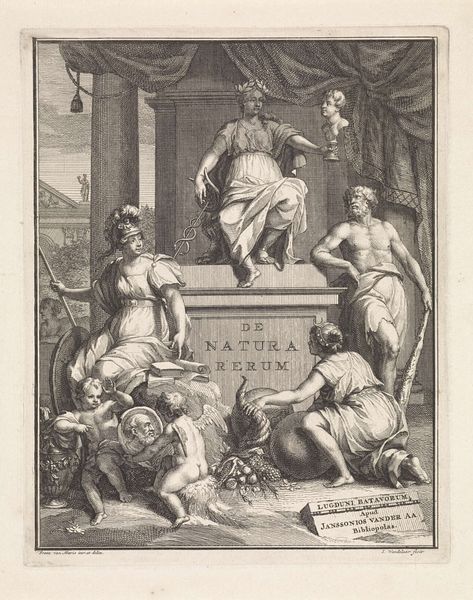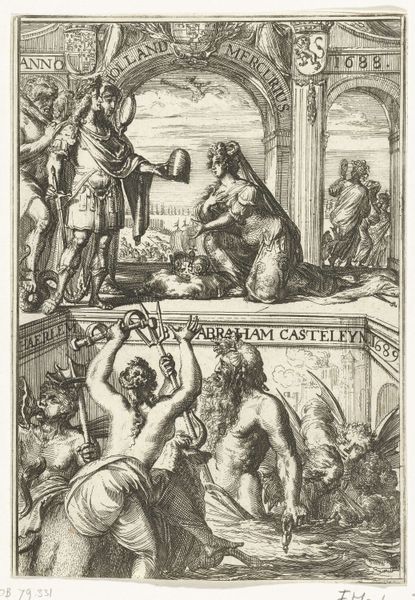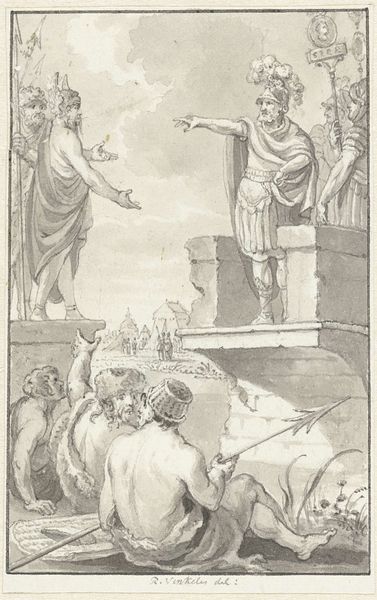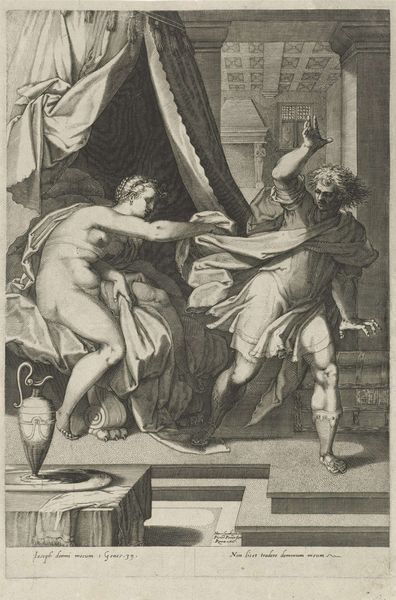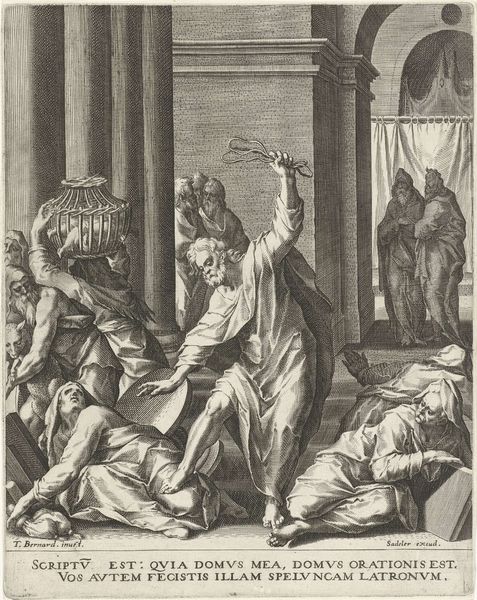
print, engraving
#
baroque
# print
#
figuration
#
history-painting
#
engraving
Dimensions: height 204 mm, width 137 mm
Copyright: Rijks Museum: Open Domain
Editor: Cornelis Bloemaert’s engraving, "A Massacre at the Gate of a Temple" from 1640, is intense! The figures are so dramatic, and the scene is incredibly violent. What story do you think it's trying to tell? Curator: It’s a powerful image. The baroque style amplifies the sense of drama. But beyond the visual spectacle, I'm compelled to consider what this depiction of violence reveals about power dynamics in the 17th century. How might ideas about religion, the state, and gender be playing out here? Do you see any specific clues in the imagery that relate to historical narratives? Editor: Well, the temple setting and the implied religious element… Maybe it speaks to the conflicts stemming from religious reformations and the power struggles between different faiths? Curator: Exactly. And notice the central female figure seemingly directing the violence. How does this challenge or reinforce prevailing gender roles and expectations of the time? Could this be a commentary on female agency, or perhaps a cautionary tale about the dangers of female power? Editor: That's a good point. I hadn’t considered that the female figure could symbolize something about power structures. It complicates the narrative, it isn’t just a straightforward historical scene. Curator: Precisely. This piece becomes much more than just a representation of a singular historical event; it offers an opportunity to explore broader societal anxieties and power struggles reflected in artistic production. Thinking about intersectionality, how might the experience of violence differ depending on factors like class, gender, or religion in the context the artist lived in? Editor: Looking at the engraving again, those themes add layers of interpretation that I hadn’t even considered! Curator: It reveals how art can function as a visual register of these complexities, encouraging us to critically examine both the artwork and the world that produced it.
Comments
No comments
Be the first to comment and join the conversation on the ultimate creative platform.
